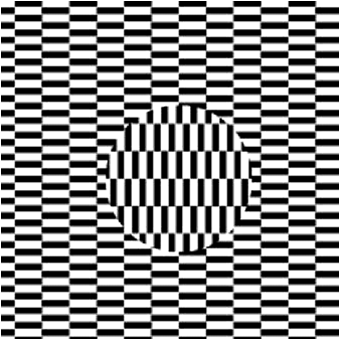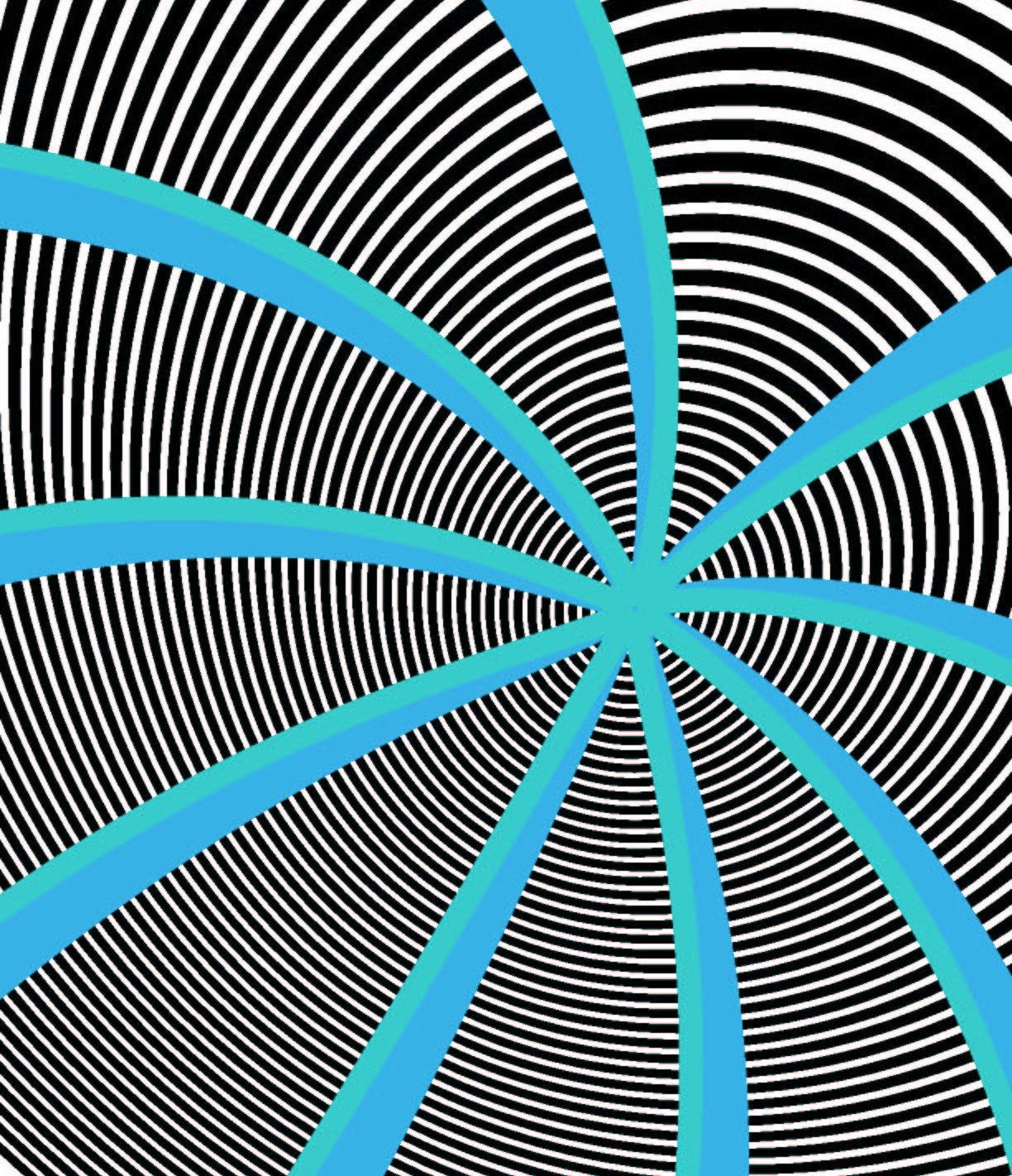
Theory of Bias
The images and videos recorded on our retina are not perfect (like any other signal recorded by some device). Using the language of statistics, we can say the signal is noisy. The computations of our vision system then can be considered as estimations and analyzed with statistics. It turns out that in the presence of noise the estimations are statistically biased, causing simple image features, image motion, and 3d shape to be estimated away from the veridical.
Read more at this Website
Causal Filtering
A class of patterns, composed of repeating patches of asymmetric intensity profile, elicit strong perception of illusory motion. Note, the illusory effect is perceived in the periphery of the eye, not near the center of fixation. It depends on the eye's spatial resolution – the human eye has higher resolution at the fovea than the periphery. We propose that the main cause of this illusion is erroneous estimation of image motion induced by fixational eye movements. Image motion is estimated with energy filters, which are symmetric in space, but asymmetric (causal) in time. That is, only the past, but not the future, is used to estimate the temporal energy. We have shown that such filters mis-estimate the motion in patterns like the one shown here (which are locally asymmtric) at certain spatial frequencies.
More in this Paper
Interplay of 3D Motion Estimation and Segmentation
The pattern shown is a variant of Enigma (by the painter Leviant), and it causes perception of illusory movement in the bands. Our explanation relies on a model for the interpretation of three-dimensional motion information contained in retinal motion measurements. Eye movements and/or accommodation changes cause weak retinal motion signals, which are interpreted by higher-level processes in a way that gives rise to Enigma and a larger class of patterns exhibiting the same illusory movement, which we created. These patterns are such that their texture does not allow recovery of all the components of the observer's own motion.
More in this Paper